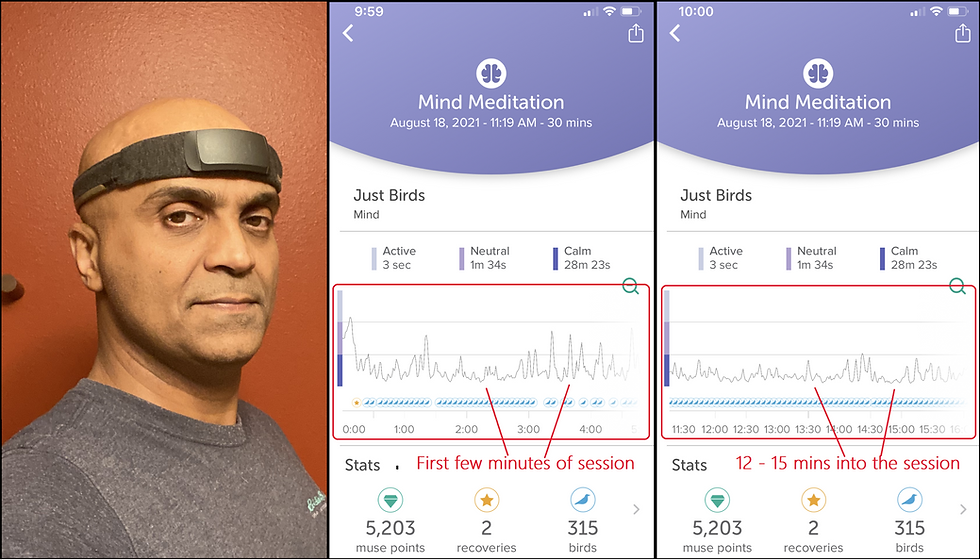Unpacking Yoga Nidra, Google CEO Sundar Pichai’s Chosen Method of Relaxation
- Kris Shankar
- Mar 31, 2022
- 4 min read

A friend posted this on our high school WhatsApp group “Wow… The internet is ablaze with the recent Wall Street Journal interview with Sundar Pichai, where he mentions his use of Non-Sleep Deep Relaxation (NSDR) or Yoga Nidra to relax. Anyone have practical experience with Yoga Nidra? How different is it from other guided relaxation techniques?” Having practiced Yoga Nidra on and off for about 27 years, I thought I’d describe the technique and its benefits for the curious.
What is Yoga Nidra?
First of all, Yoga Nidra is a form of guided relaxation, not a meditation technique. As Sundar Pichai himself says, “meditation is something I see the value of, but I struggle to do that…so when I find it difficult to meditate, I go to YouTube and find an NSDR video.” In all Eastern meditation schools, relaxation is a prerequisite step to meditation. You can use Yoga Nidra to simply relax deeply, as a springboard to creativity, or as a stepping stone to meditation. Yoga Nidra can help you achieve a state of deep relaxation by putting you in a state between deep sleep and wakefulness. When you practice Yoga Nidra, your body and mind are asleep, but you are yet aware and alert. I’ve personally observed myself snoring and blissfully asleep! If that seems contradictory, multiple NIH research papers* have documented unique EEG brainwave patterns in subjects practicing Yoga Nidra that are correlated to deep relaxation, increased alertness and creativity, all at the same time. You may have already dipped your feet in the water…anyone who’s been to a regular yoga studio is familiar with Savasana, the corpse pose, with which most sessions end. Savasana is Yoga Nidra lite, a few brief minutes of deep relaxation at the end of a strenuous yoga workout.
How is it different from normal sleep?
An ancient technique, Yoga Nidra was popularized in the modern world by Swami Satyananda Saraswati of the Bihar School of Yoga, India. As the Swami describes it, we are normally unable to sleep restfully because we don’t release the physical, mental and emotional tensions stored up in our bodies when we go to bed. These tensions are constantly working on us at night, as anyone who has woken up in the middle of the night and is unable to go back to sleep can attest. When you practice Yoga Nidra, you release physical tensions through a process of body scanning, and mental tensions by playing the day’s events backwards, in a process that enables you to distance yourself from them. From personal experience, I can say that I usually sleep through the night if I squeeze in a Yoga Nidra session just prior to bedtime.
What are its purported benefits?
In addition to an uninterrupted night’s sleep when we practice Yoga Nidra prior to bedtime, both Bhavna and I can attest to the need for significantly less sleep — down to 5–6 hours from the usual eight. Bhavna credits her nightly routine of Yoga Nidra with seeing her through her University of Washington master’s program at the age of 40. Our Dutch friend Andries, a taciturn MIT engineer, waxes eloquent about how the bootleg Yoga Nidra CD I gave him five years ago has enabled him to reduce his stress levels and anxiety and get his tachychardia under control. In his book, Swami Satyananda calls out the similarities (and crucial differences) between Yoga Nidra and hypnosis, and asserts that Yoga Nidra can unlock creativity and innovation. He draws a comparison to the hypnagogic states in which Einstein performed his thought experiments on light waves, and Kekule discovered the circular structure of the Benzene molecule. And of course, if you want to meditate but find that you are usually too restless or tired to do so, Yoga Nidra is a great preparatory step that sets you up for a successful meditation session.
Where should I start?
What’s not to like about Yoga Nidra? Unlike meditation, it requires no effort other than slapping on a pair of headphones and setting aside 10–40 minutes at any time of the day to passively follow instructions from a disembodied voice. Even better, you (must) do it lying down with eyes closed. If you’ve had a long day, you don’t need to worry about focusing on your breath or sit upright with your spine erect. Which is why Sundar Pichai makes time for Yoga Nidra even if he doesn’t feel inclined to meditate. If you think you are ready to give Yoga Nidra a try, start with this 30 min YouTube recording by Swami Niranajananda of the Bihar School of Yoga. There are shorter versions, but I find that 30 mins is a minimum length to experience positive results. And if you want to read an entire book on the topic, I recommend Swami Satyananda’s seminal book Yoga Nidra on Amazon (4.5 / 903 ratings) which covers everything from its origins, technique, and recent neuroscience research to therapeutic benefits for a range of health problems.
I’d love to hear about your experience after you give it a try or to answer any questions you might have before you take the plunge.




Comments